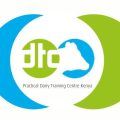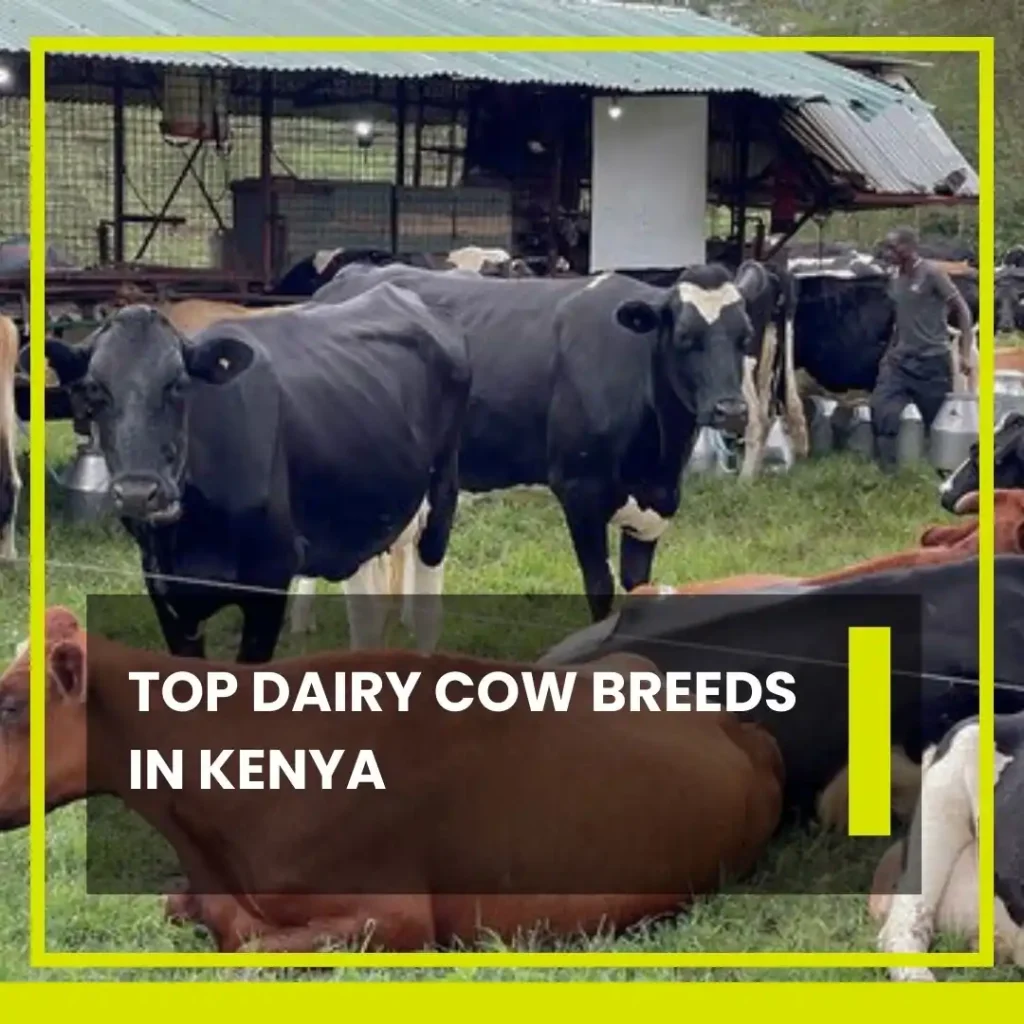Top Dairy Cow Breeds In Kenya
Introduction
Kenya’s dairy industry has been a cornerstone of our agricultural economy for decades. It contributes a lot to jobs and food security. The demand for dairy products is growing and the sector has seen big growth which has been attributed to good weather and government aid. Careful choice of cow breeds is crucial to this success. The breeds are tailored to local conditions with an emphasis on high milk yield, adaptability, and disease resistance.
Holstein-Friesian, Jersey, and Ayrshire breeds are many of the most desired breeds due to their high milk-producing traits. However, indigenous breeds like the Boran and Sahiwal also play a vital role. They are known for their resilience to harsh conditions and tolerance of sickness. Choosing the best breed ensures sustainable milk production. It helps with livelihoods and meets Kenya’s people’s dietary needs while boosting dairy business in kenya.
Selecting a Proper Diary Breed in Kenya
While selecting a dairy cow breed, several factors should be considered to ensure productivity and sustainability. Climate conditions are critical. Breeds must be well-suited to local conditions to thrive and avoid health problems. Available resources dictate the breed’s potential. These resources include land, water, and feed. They allow the breed to meet its needs sustainably. Milk yield is key. Breeds vary in their production abilities. This lets farmers align their selections with market demands and profit goals. Also, consider sickness resistance, adaptability to management, and general herd control. You should evaluate these traits to choose well. Good choices will maximize productivity and minimize dangers in dairy farming.
Top Dairy Breeds in Kenya
1. Friesian
The Friesian breed comes from the Netherlands and has a recognition for being bred for dairy. it’s been widely utilized in Kenya due to its excessive milk production capability. Friesians are known for their massive size. They have a black and white coat and sturdy, well-connected udders. Friesians have some of the very best milk yields.
They produce a median of 25,000 liters per lactation and are properly perfect for the Kenyan climate. Friesians are well-suited to the Kenyan climate. Other advantages include; they also have good fertility and they can adapt to many management styles. Friesians have weaknesses as they need intensive management and get sick more than Indigenous breeds.
2. Ayrshire
The breed originated in Scotland and has been bred for dairy for masses of years. they have won recognition in Kenya for their adaptability and disease resistance. Ayrshires have an extraordinary crimson and white coat. They also have a medium to big-sized frame and robust, properly related udders. Ayrshires produce a mean of about 20,000 liters of milk in a single lactation period.
Their strengths are their sturdiness, illness resistance, and flexibility. They can also adapt to diverse control systems and this makes them properly-proper to Kenyan situations. Ayrshires have proper productivity but, their milk yield can be slightly decreased than a few other dairy breeds.
3. Guernsey
This breed originated from the Channel Islands that were particularly on the island of Guernsey. They are known for their capacity to produce high-quality milk with a golden tint. Guernsey cows have distinct traits. They have a medium-sized frame and produce golden milk. The milk is golden because of too much beta-carotene. They also have a gentle disposition. Guernsey’s produces around 15,000 liters of milk per lactation.
Their strengths are in the milk they produce. It has a rich taste and high butterfat. This makes it ideal for dairy products like butter and cheese. Guernsey’s also are well adaptable to grazing structures. Guernsey’s however can also have a slightly lower milk yield in comparison to larger dairy breeds.
4. Jersey
Jerseys originated from the Channel Island of Jersey. They’re one of the oldest dairy breeds and are recognized for their rich, creamy milk. Their traits are specific. Jerseys are shorter than the regular dairy breeds. They have a fawn-colored coat and massive, expressive eyes and are shorter in length generally. Jerseys have a good butterfat content in their milk.
Jerseys produce about 18,000 liters of milk in a single lactation period. They are known to be excellent at converting feed. They make milk with high butterfat, so it supplements other dairy products such as butter. They’re additionally regarded for their adaptability to numerous climates. Jerseys are however known to have slightly lower milk yields compared to large breeds.
5. Brown Swiss
Brown Swiss livestock originated in Switzerland. They are one of the oldest dairy breeds. They are recognized to produce both good milk and meat. Some of the most distinctive traits of the Brown Swiss are that they have huge and sturdy bodies and are massive in size. They are usually dark brown to gray and have strong legs.
Their average milk production is 23,000 liters per lactation. They are suitable for many farming activities. They are known for their right temperament and adaptability to various climates. They have good productivity in general but their milk has slightly less butterfat than some other dairy breeds.
6. Boran
Boran livestock are from Kenya. They’re properly suited to the local weather and surroundings. They have a reddish-brown coat, medium length, and a hump. Milk production in Boran cows can vary a lot. They generally produce about 6,000 liters per lactation.
Boran’s have their strengths. They adapt well to warm and arid climates. They can handle the heat, resist sickness, and adapt to harsh conditions. Borans are also known to be low-maintenance as they do not require much feed. Boran’s weaknesses are that they commonly have a decreased milk yield compared to other dairy breeds.
7. Sahiwal
Sahiwal cattle originated in South Asia. They have been bred for dairy for hundreds of years and have been added to Kenya for their adaptability to hot and humid climates. Sahiwal cows have a red-brown coat or rarely a pink-brown coat. They may be medium-sized and feature a hump over their shoulders.
They produce approximately 3,000 to 4,000 liters of milk in a single lactation period. Sahiwal’s are known for their good temperament. They’re resistant to disease and thrive in large grazing systems. Sahiwal’s however have less milk than other dairy breeds.
Additional Factors to Consider While Selecting a Dairy Breed
Availability of Breeding stock in Kenya: access to breeding stock of a particular breed inside Kenya can notably impact breed choice. Limited availability may lead farmers to opt for common breeds or opt for importing the breed and, that can increase the ownership costs.
Farm Size and Resource Limitations: the scale of the farm and available sources consisting of land, water, and feed can affect breed selection. Larger farms with sufficient resources may also prefer high-yielding breeds like Friesians, even as smaller farms with few resources may choose greater resilient indigenous breeds like Boran or Sahiwal.
Understand the target market’s preferences. Also, know the qualities they prefer in milk. This knowledge can guide in selection. For instance, if there’s a demand for excessive fat content in milk for cheese manufacturing, breeds like Jersey or Guernsey are recognized for their rich milk, and thus may be preferred. If there is a demand for organic or grass-fed milk, breeds well suited to grazing structures might be perfect. Aligning breed choice with market needs can enhance the farm’s profitability and competitiveness.
Conclusion
Selecting the top dairy cow breed for your Kenyan farm depends on your priorities. High producers like Friesians need intensive management, while resilient Ayrshires offer good milk yield and disease resistance. Guernseys boast golden milk ideal for cheese, while Jerseys are known for their creamy milk but have a smaller build. Brown Swiss are well-rounded with high milk production. Local Boran and Sahiwal breeds are tough but produce less milk. Choose the breed that aligns with your climate, resources, and desired milk qualities.

